While a guest instructor on my first photo tour to northern Vietnam, I was fortunate to spend a weekend exploring two traditional markets in Lao Cai Province – the Can Cau and Bac Ha fairs.
Having arrived in the provincial town of Bac Ha late on a Friday afternoon, we were positioned perfectly to take advantage of the two markets. Rising before dawn on Saturday, our group of eight photographers set out just as the fog cover was beginning to burn off over the surrounding mountains.
It was a scenic, 40-minute drive to the valley where the Can Cau Fair was being held. Basing in Bac Ha is much more convenient than the package tours travelling from Sapa, approximately three-hours each way.
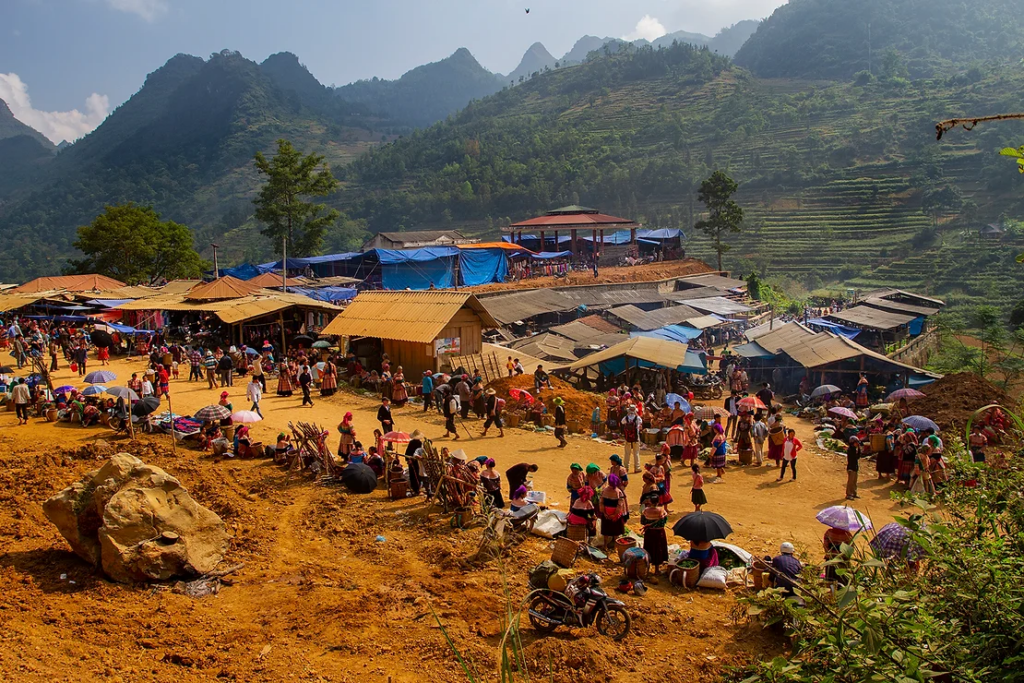
Nestled close to the Chinese border in northeastern Vietnam, Can Cau draws a colorful array of predominantly Flower and Blue Hmong people, along with a mix of other minority tribes, as well as ethnic Chinese. When our van reached the fair ground at around 6:45am, it was already in full swing as most vendors begin setting up before dawn. The main market area is set along a half-kilometer of road and spills down the terraced hillside into the valley below where various animals are sold and traded.
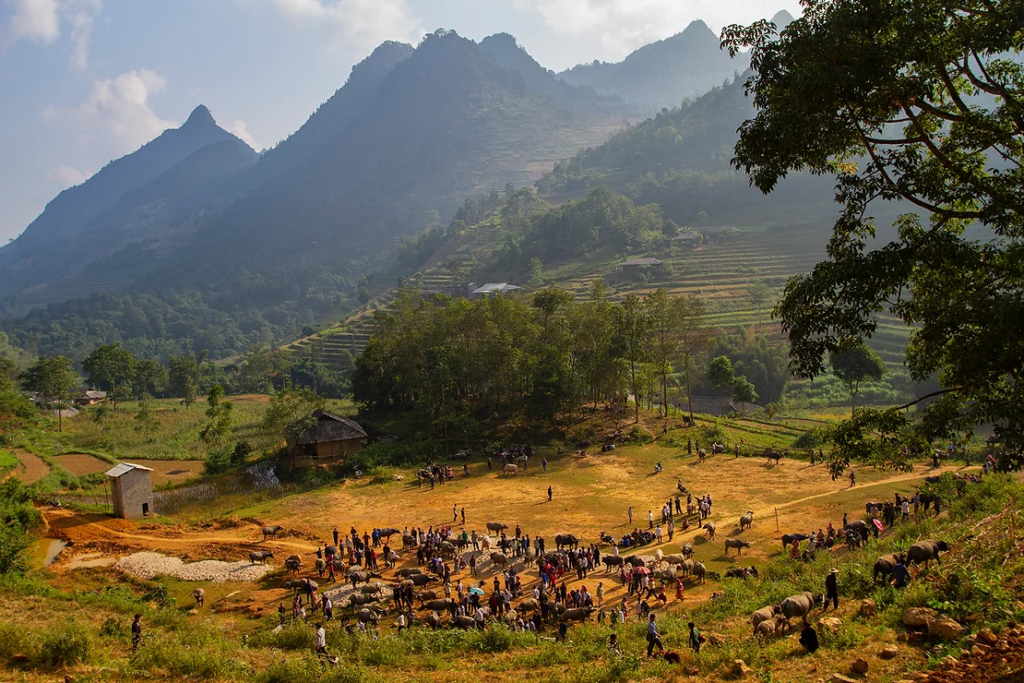
The most prolific array of roadside booths was devoted to the selling of textile goods. I noticed the rainbow-colored fabrics, typical of the Flower Hmong, resemble fabric patterns I had seen from Guatemala and Peru. This led me to later research ancient migratory paths when land bridges existed between continents. I have also recommended this particular market to textile manufacturers and fashion designers eager to find new sources of inspiration.
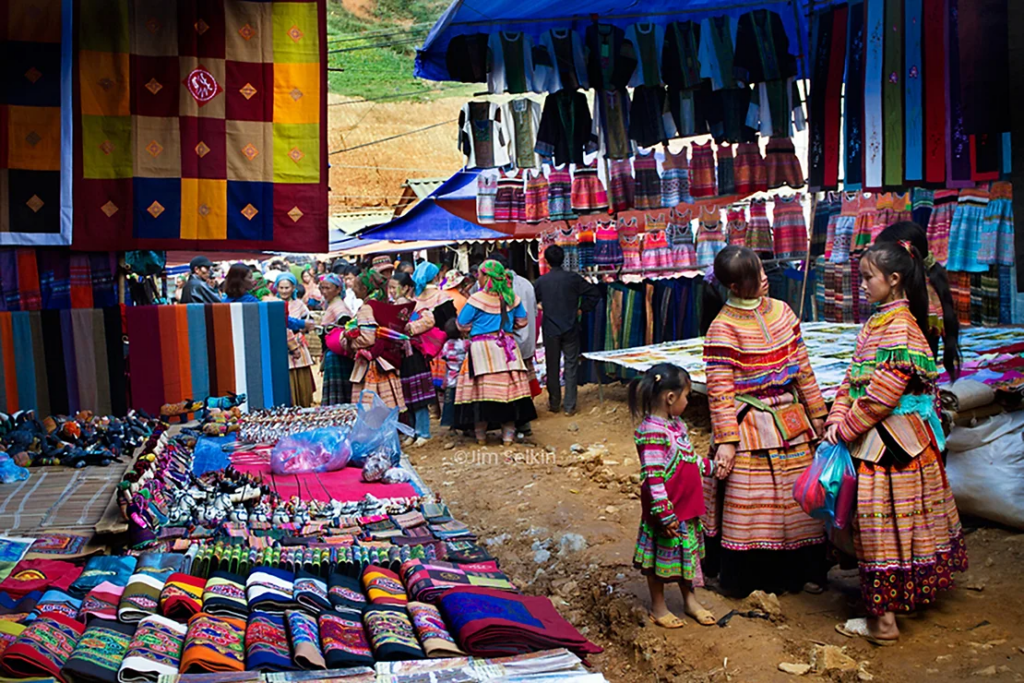
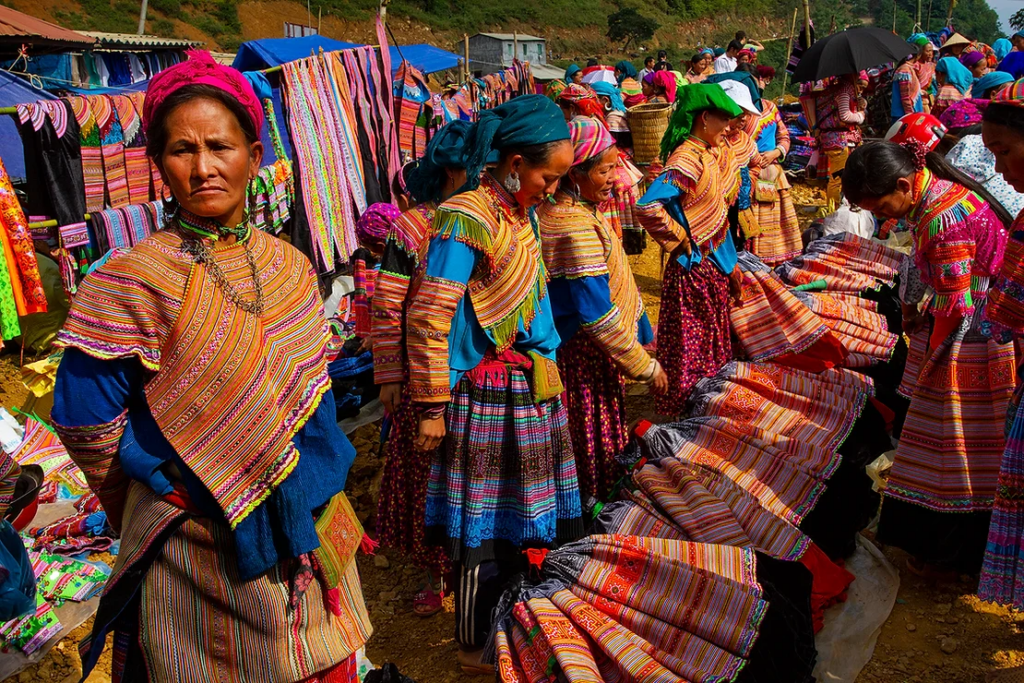
Multiple vendors selling similar colored fabric outfits
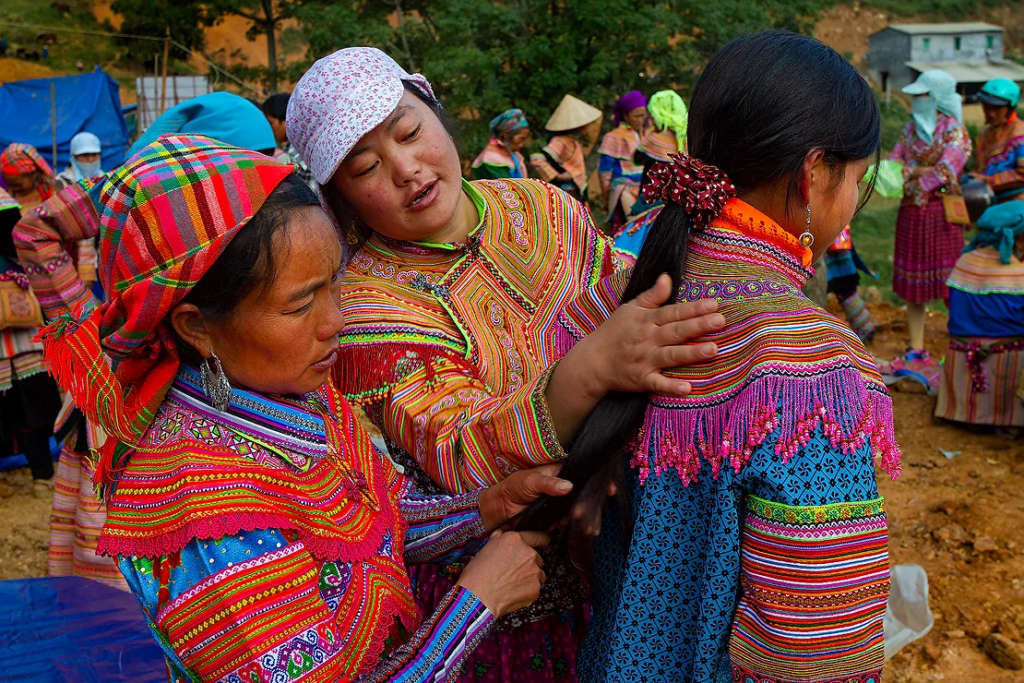
I discovered that one has to be a shrewd bargainer to counter the aggressive selling techniques of some women. In a field where perhaps 30 stalls sell essentially the same fabrics, it brought to mind the shouting and shoving that takes place when trying to be recognized on the floor of a mercantile exchange.
Walking along the road in search of more images, I graciously turned down offers of a one-dollar haircut at a pop-up barber stand or buying enormous cooking pots and pans. Further down the line, others were beckoning me to try samples of water bottles filled with rượu—a potent, native liquor, distilled from ground corn or rice. But not at 8 am.
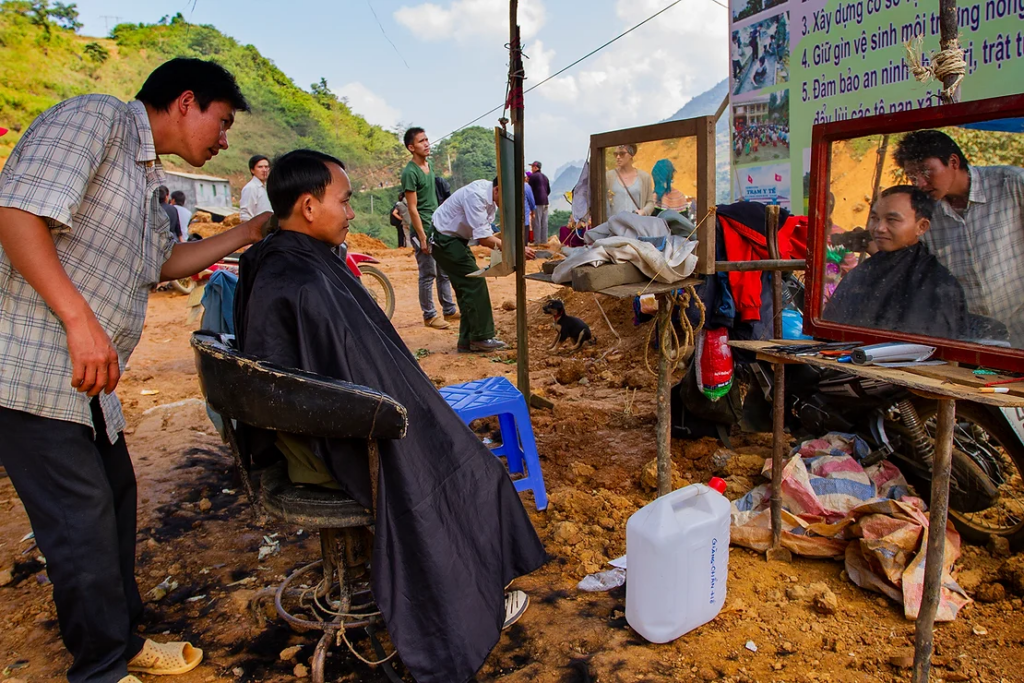
I then followed an old woman leading her goats up a mountain trail to gain an overview of the market. While up there, I observed younger couples congregating around the motorbike parking lot and was later told it served as a singles-meeting area for those from different villages.
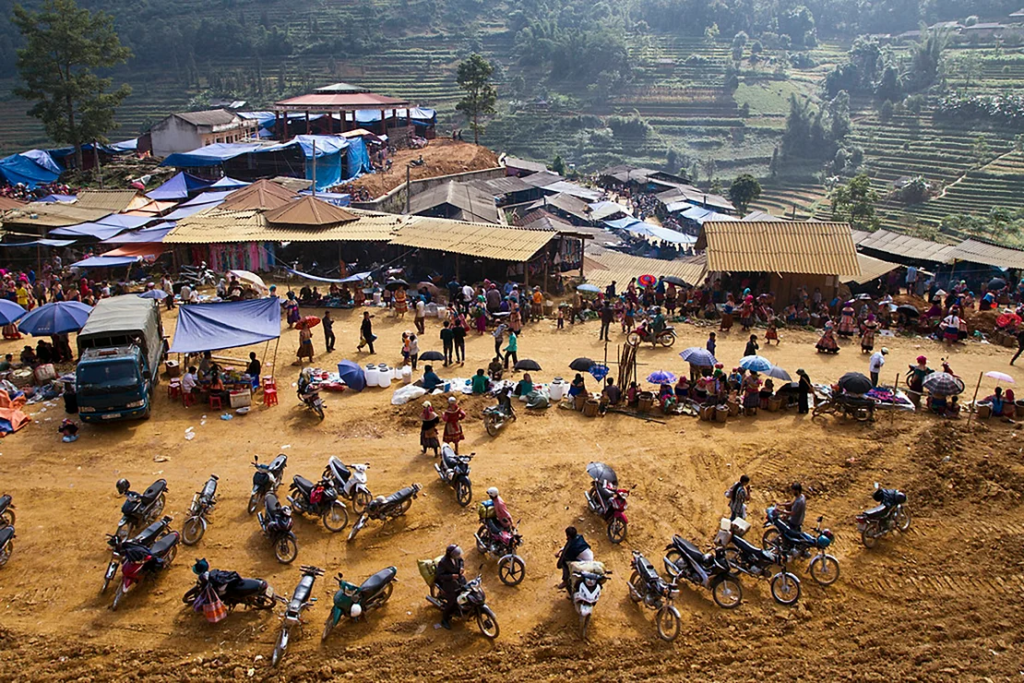
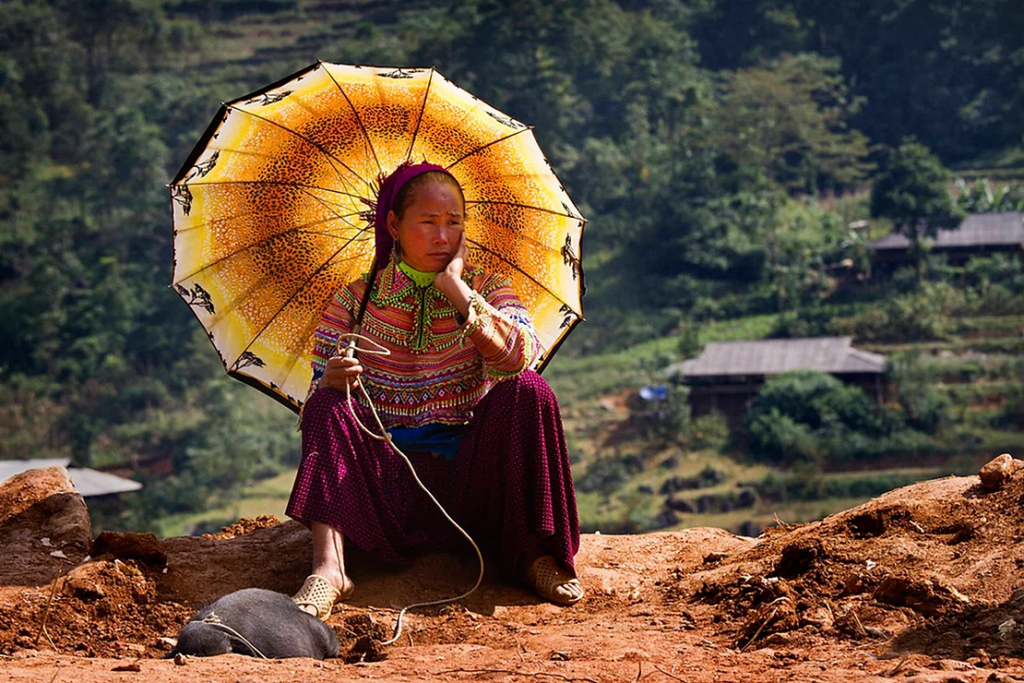
By 1pm the fair started to disperse with vendors packing their goods onto to motorbikes, trucks or vans for the return to their hillside villages. Others meanwhile set out for the next day’s fair, over 20 kilometers away back in Bac Ha.
The following morning, our intrepid group was out photographing at 6 a.m. as vendors came on foot, by motorbike or piled in buses, for the Sunday, Bac Ha Fair. While not as expansive as the previous day, this market mainly caters for household goods and provisions along with the ever-present rượu vendors. With hardly any refrigerators, row after row of butchers carved every conceivable part of an animal or bird and hung it for sale.
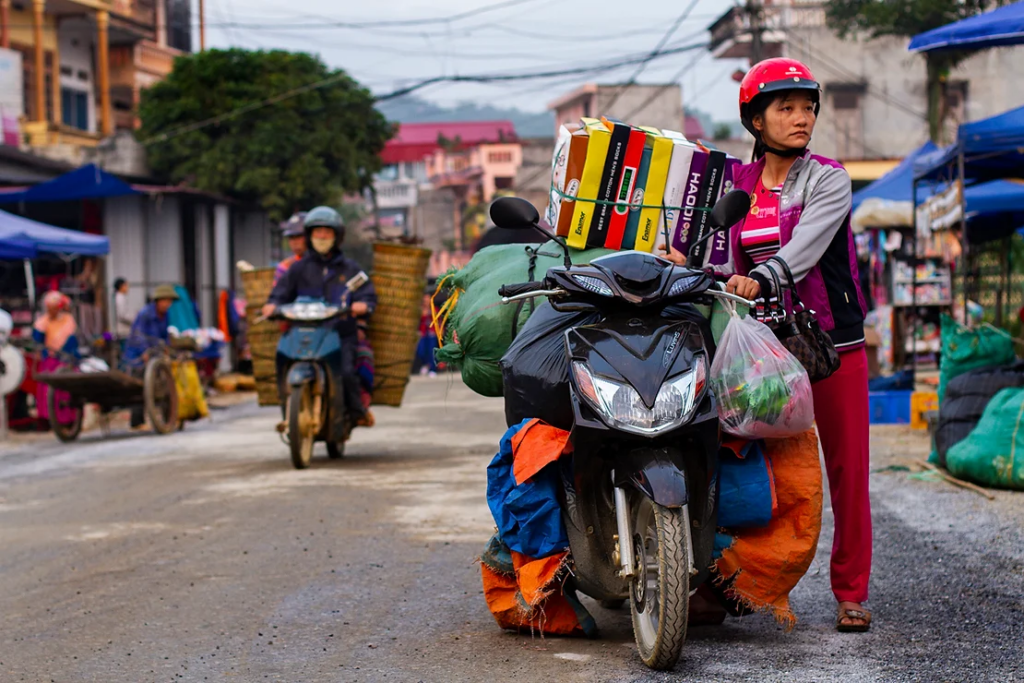
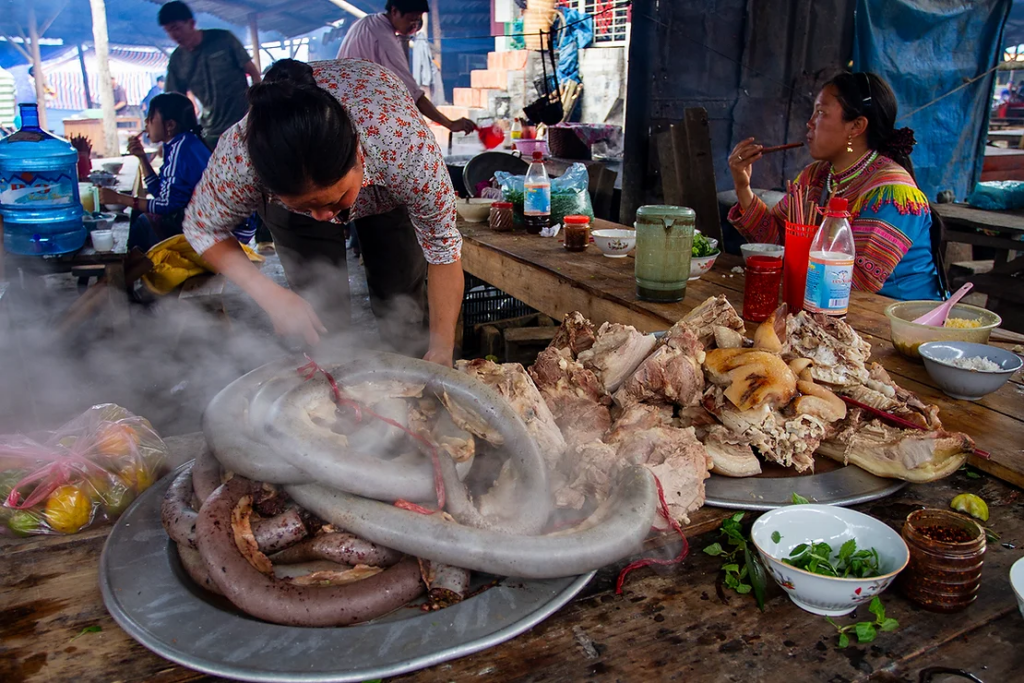
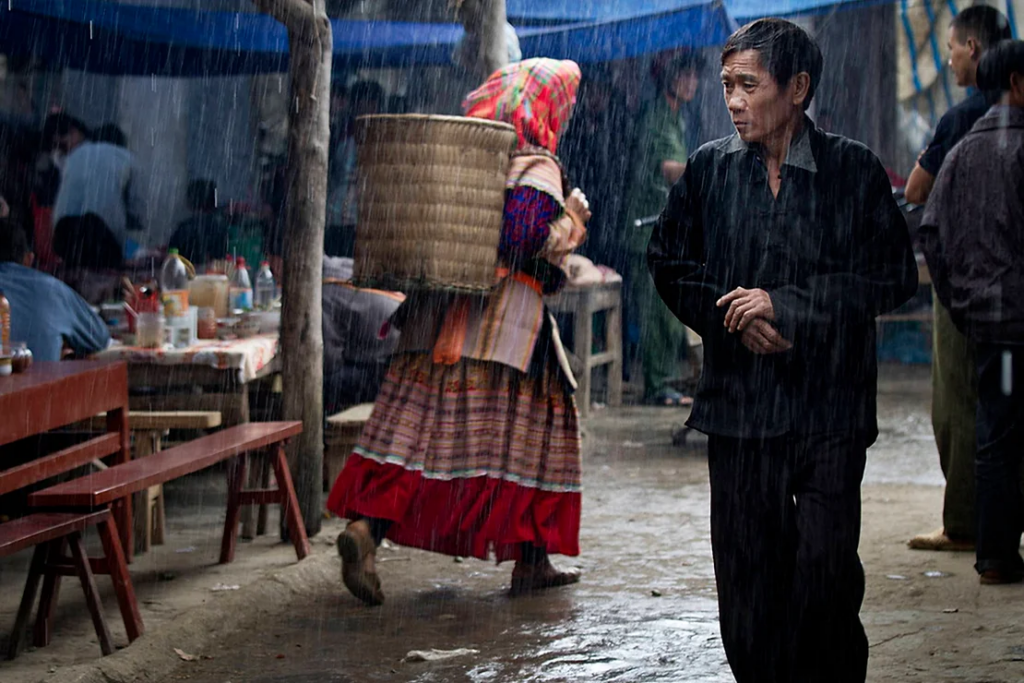
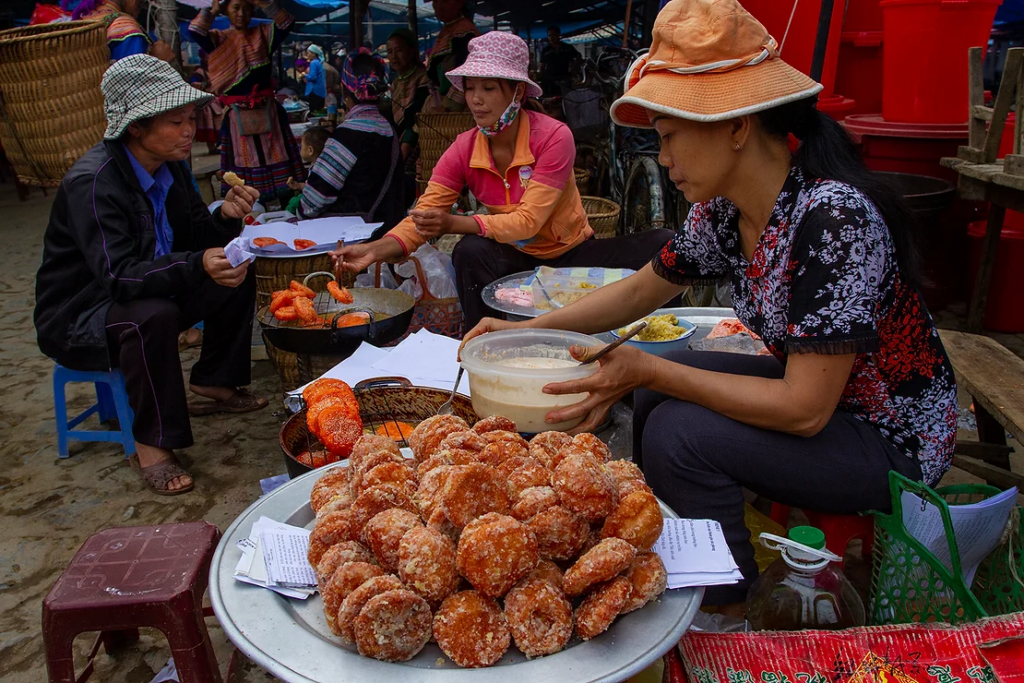
One notable difference in fairs were the many food stalls serving everything from phở [Vietnamese-style noodle soup] to Hmong-style sausages with herbs [lạp xưởng]. It is also where I got my first taste of the rich, Vietnamese drip coffee served with condensed milk [ca phê phin] along with hand-made Vietnamese donuts [bánh căm]. Walking through the fair, I was continually mesmerized by the sights, sounds and aromas.
Most of all, Can Cau and Bac Ha fairs are photographers’ dream locales, where you could fill a memory-card’s worth of images in a matter of hours.
All images are copyright in perpetuity @Jim Selkin
An edited form of this article appeared in The Saigon Times.
